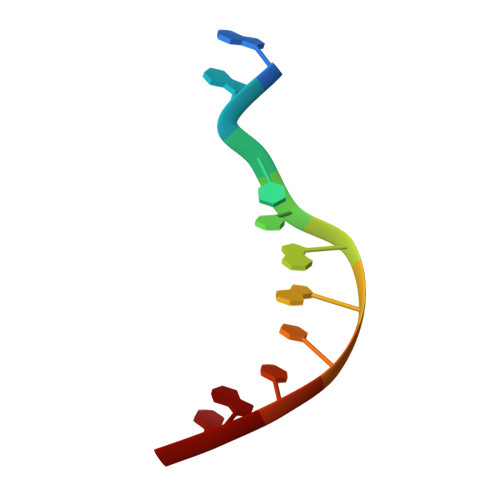Crystal structure of d(GGCCAATTGG) complexed with DAPI reveals novel binding mode.
Vlieghe, D., Sponer, J., Van Meervelt, L.(1999) Biochemistry 38: 16443-16451
- PubMed: 10600105
- DOI: https://doi.org/10.1021/bi9907882
- Primary Citation of Related Structures:
432D - PubMed Abstract:
The single-crystal X-ray structure of the complex between the minor groove binder 4',6-diamidino-2-phenylindole (DAPI) and d(GGCCAATTGG) reveals a novel way of off-centered binding, with an unique hydrogen bond between the minor groove binder and a CG base pair. Application of crystal engineering and cryocooling techniques helped to extend the resolution to 1.9 A, resulting in an unambiguous determination of drug conformation and orientation. The structure was refined to completion using SHELXL-93, resulting in a residual factor R of 18. 0% for 3562 reflections with F(o) > 4sigma(F(o)) including 81 water molecules. As the bulky NH(2)-group on guanine is believed to prevent drug binding in the minor groove, the nature and stability of the CG-DAPI contact was further addressed in full detail using ab initio quantum chemical methods. The amino groups involved in the guanine-drug interaction are substantially nonplanar, resulting in an energy gain of about 5 kcal/mol. The combined structural and theoretical data suggest that the guanine NH(2)-group does not destabilize the drug binding to an extent that it prevents complexation.
Organizational Affiliation:
Department of Chemistry, Katholieke Universiteit Leuven, Heverlee, Belgium.















